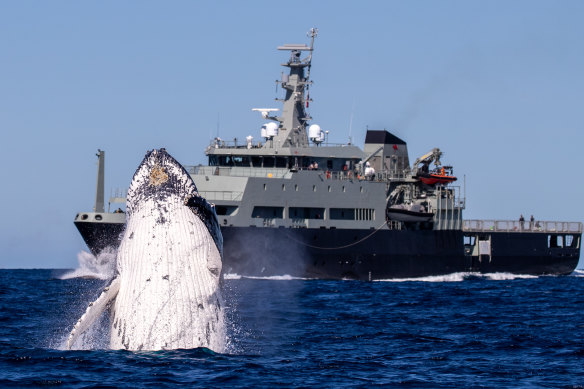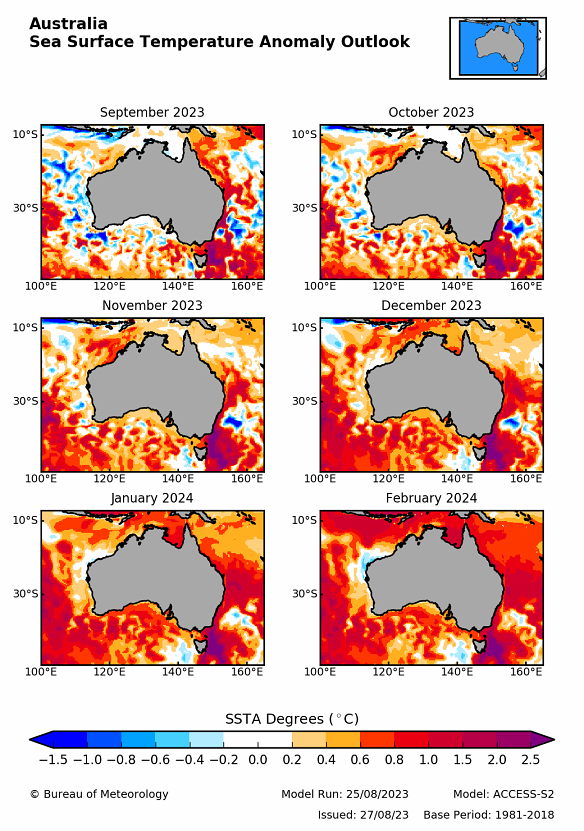Spring arrives early … but it’s not all good news
By Laura Chung
In Sydney, parks and gardens are blooming, skies are blue and temperatures are predicted to dance between 19 and 24 degrees over the coming days, despite some possible showers.
Off the coast, humpback whales are migrating south from the warm breeding waters off Queensland to cool krill-rich southern waters.

Warmer-than-expected weather has brought out flowers and locals.Credit: Dion Georgopoulos
Signs of an early and bright Spring will be a relief to many in a region after the previous summer’s relentless rains, though early warmth is adding to predictions by climate watchers that a long hot spell may be settling in.
Already, temperatures are around two degrees above average for Sydney this month.
Botanic Gardens of Sydney chief scientist Professor Brett Summerell says some flowers have bloomed earlier than usual, including the paper daisies. Thankfully, the pollen has not yet hit terrible levels, so sufferers of hay fever still have time to prepare.
But Summerell warned the warmer weather means some ecosystems are starting to dry out and some plants are heading towards drought stress.

A humpback whale makes its presence felt in front of the MV Sycamore, near Cronulla, over the weekend.Credit: Rachelle Mackintosh/Cronulla Whale Watching
Globally, the year has already been marked by extremely high temperatures, probably accelerated by a looming El Nino and climate change.
Weatherzone meteorologist Yoska Hernandez said winter and August temperatures have been well above the average for Sydney. The city recorded temperatures 1.9 degrees above the August monthly average, and 2.3 degrees above the winter average. July was even warmer, at 3.4 degrees above the monthly average.
Hernandez said these temperatures were concerning and the warming trends were likely to continue for the rest of the year.
Over the next three months, it looks likely that we’ll have below-median rainfall and above-median maximum temperatures for most of Australia.

Bees among new blooms in a North Sydney park on Tuesday.Credit: Nick Moir
This summer, ocean temperatures around Australia are likely to hit extreme heat levels, prompting fears of marine heatwaves and increased coral bleaching risks.
The Bureau of Meteorology forecasts show that part of the Tasman Sea off Tasmania and Victoria could be at least 2.5 degrees above average from September to February. Meanwhile, the waters off NSW could be between 0.8 degrees and 1.5 degrees warmer than average for the same period.
Australia’s top marine science agency has already warned the Great Barrier Reef is at increased risk of severe damage from coral bleaching this summer, despite finding so-called hard coral cover is at near-record highs.

BOM’s ocean temperature forecast for the coming months shows above average temperatures around all of Australia.Credit: BOM
Climate Council research director Simon Bradshaw said the forecasts were extremely concerning, particularly following months of record ocean and land temperatures.
“We’ve seen record high ocean temperatures in many parts of the world, an astonishing decline in Antarctic sea ice, and signs that the currents which distribute heat, carbon and nutrients around the world are changing faster than previously thought,” he said.
“It is particularly worrying to see such high temperatures forecast for the east coast of Tasmania, where we have already seen the enormous loss of kelp forests due to climate change.”
Bradshaw added the ocean was incredibly important in driving onshore temperature and rainfall patterns. The ocean absorbs more than 90 per cent of the excess heat trapped by greenhouse gases.
“It has been storing a problem that is now coming back to bite us,” Bradshaw said. “These dramatic changes in our ocean emphasise the extreme urgency of the climate crisis and the need to get emissions plummeting this decade.”
Get to the heart of what’s happening with climate change and the environment. Our fortnightly Environment newsletter brings you the news, the issues and the solutions. Sign up here.